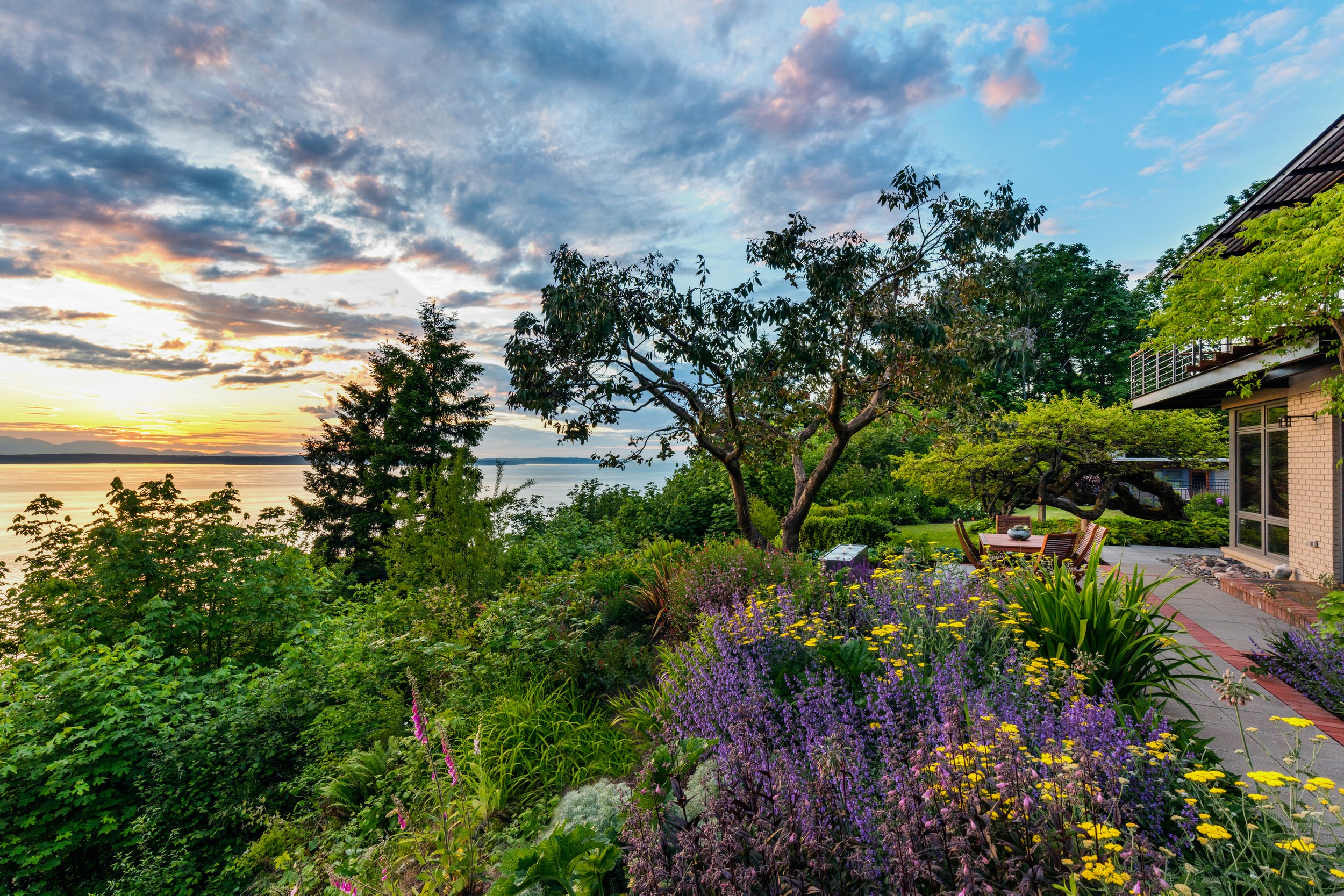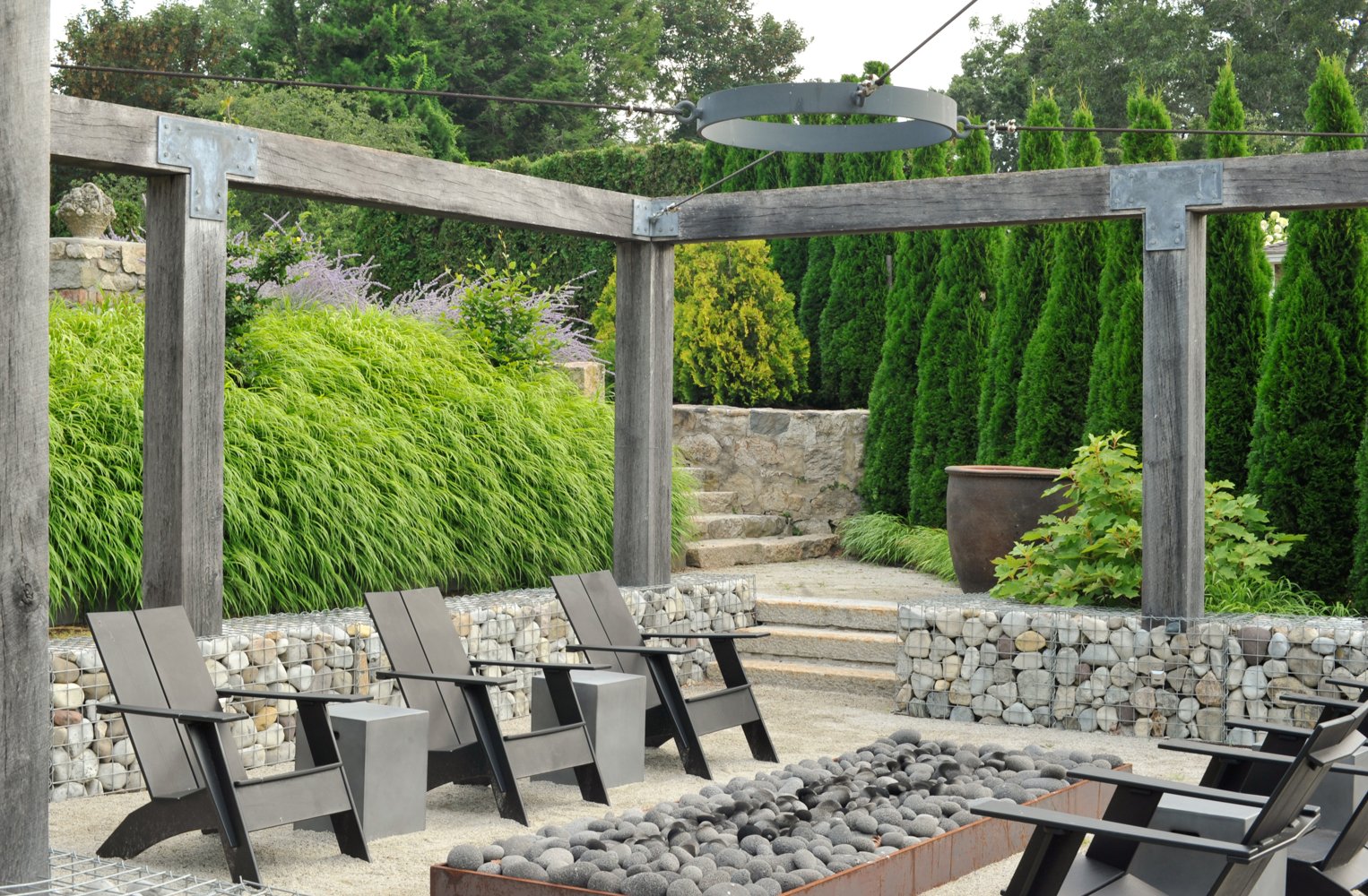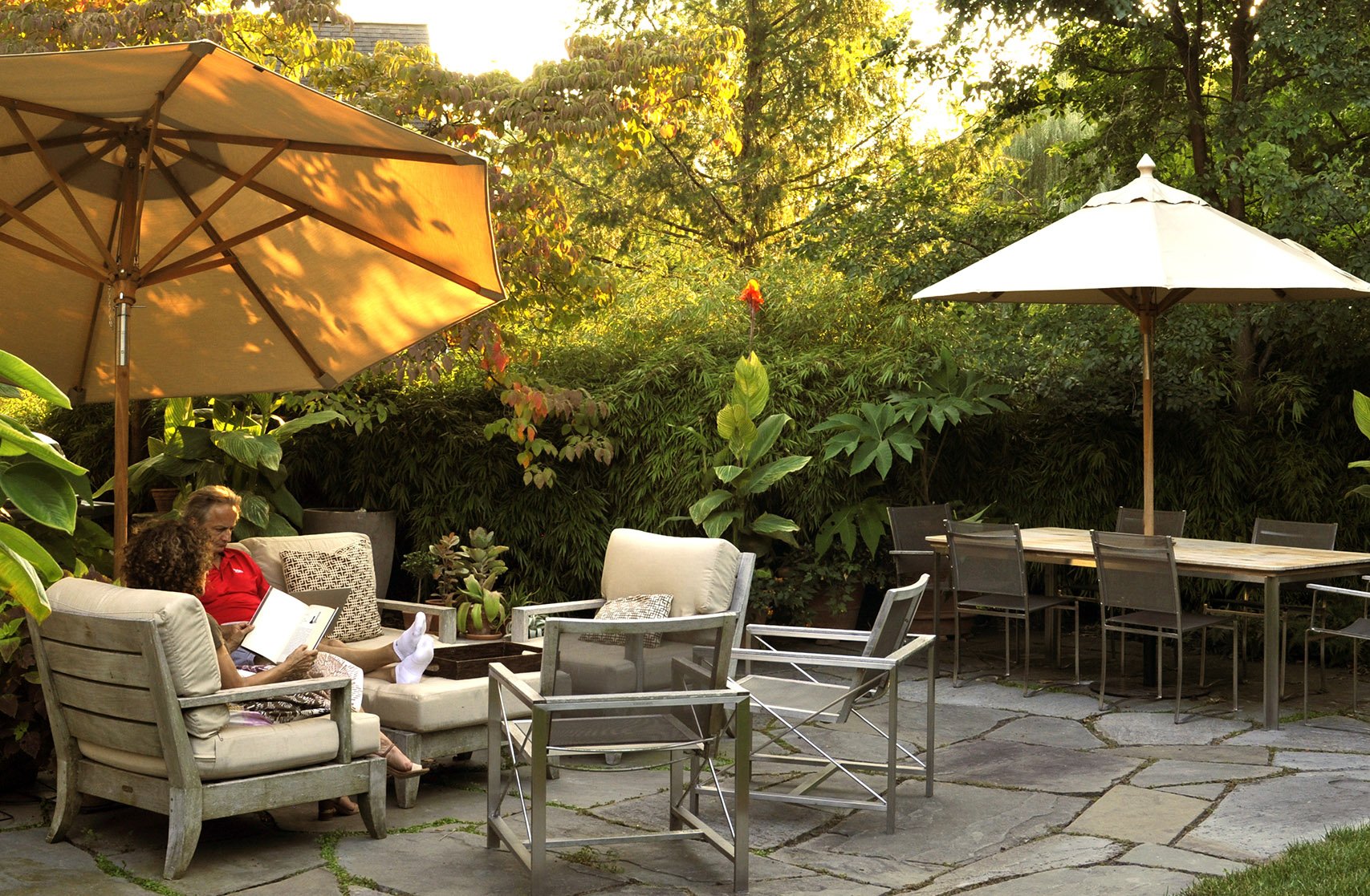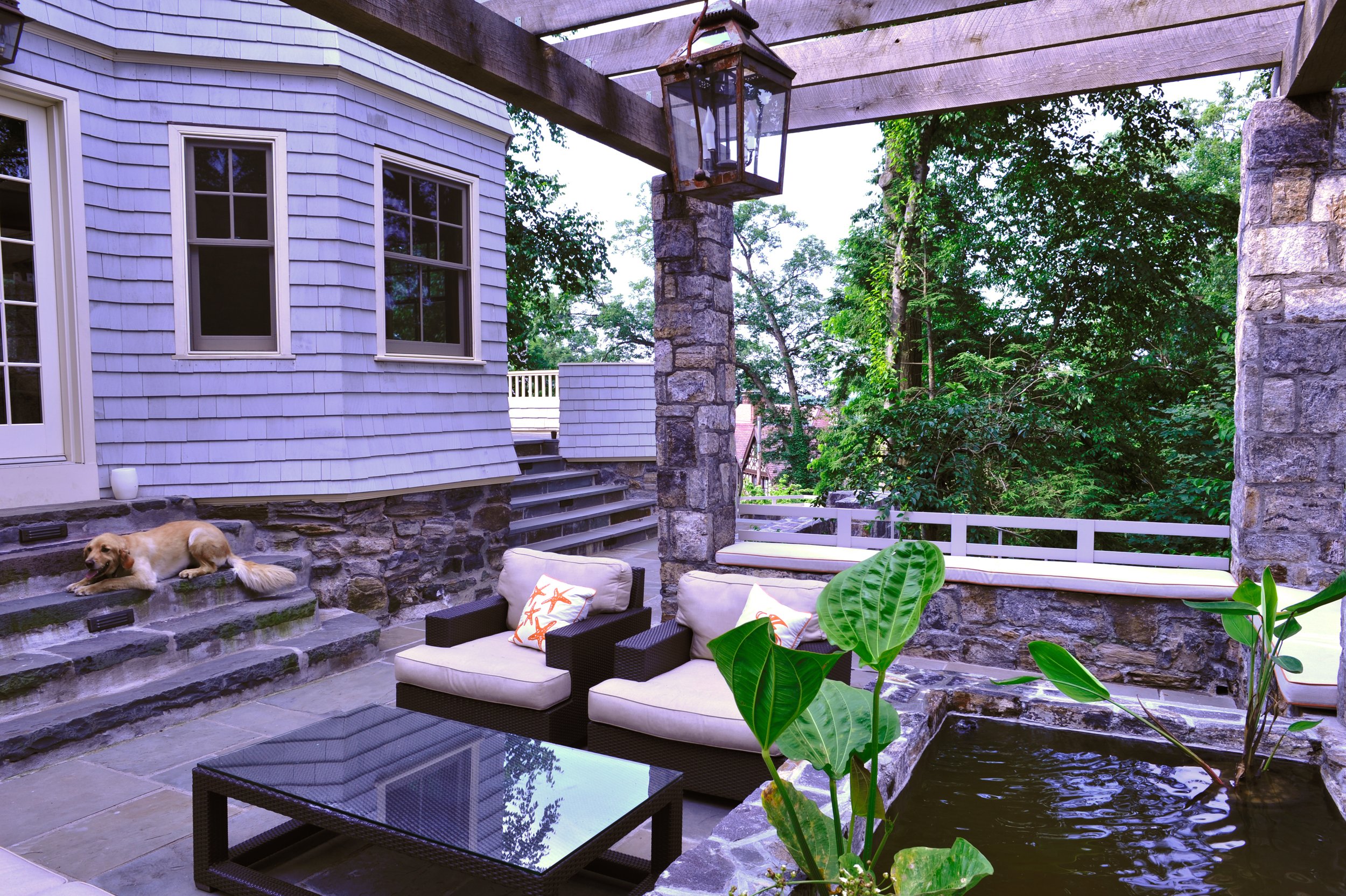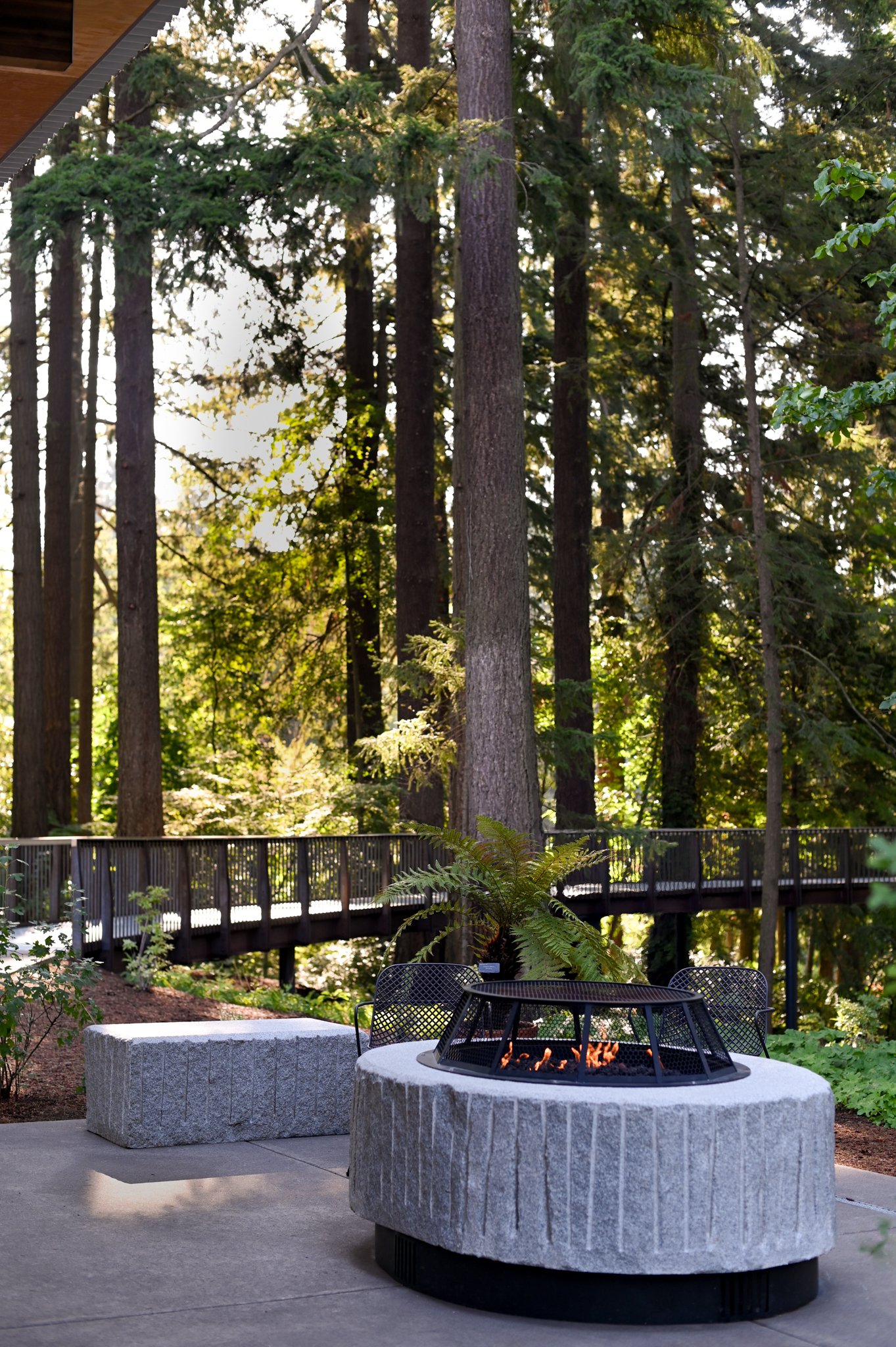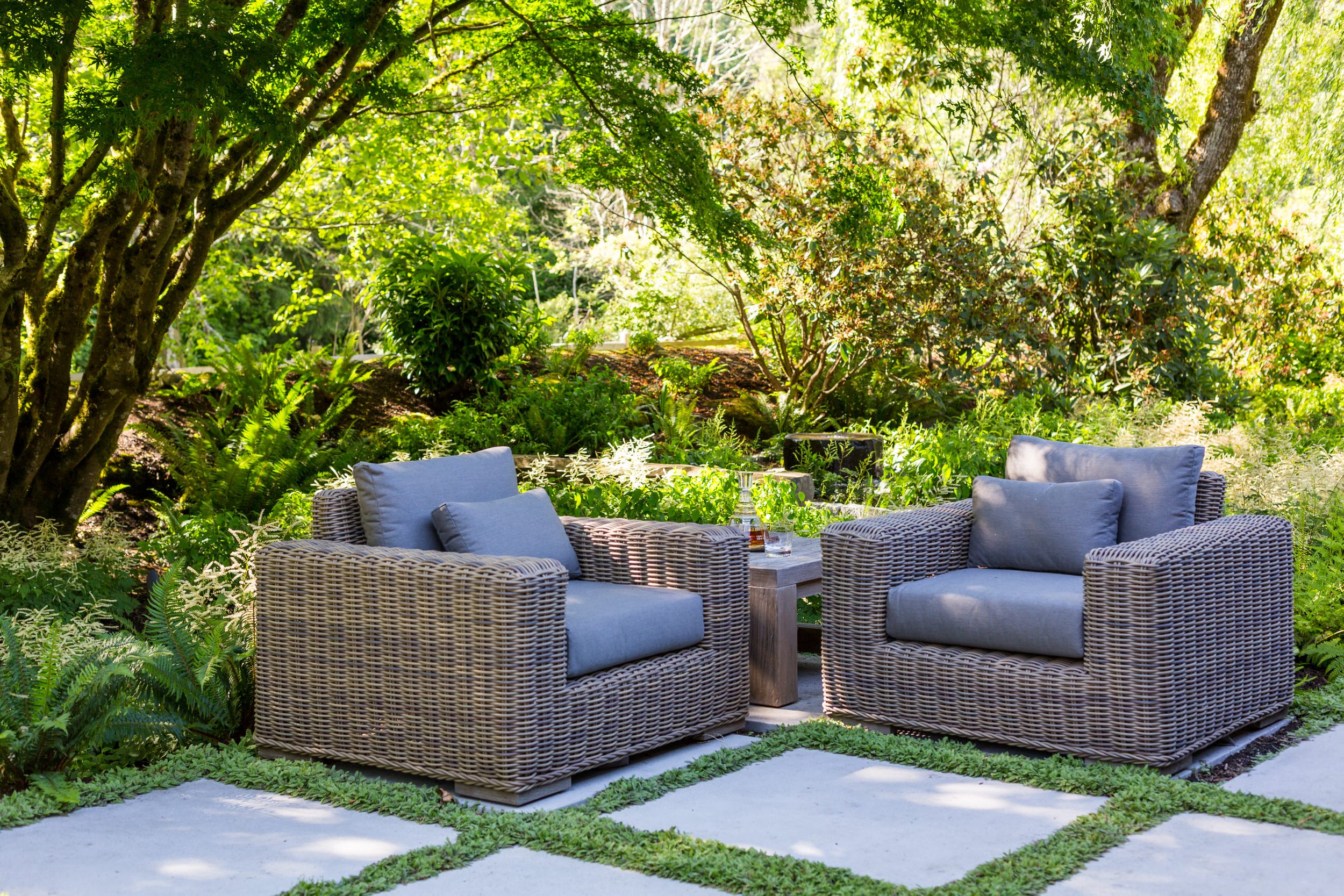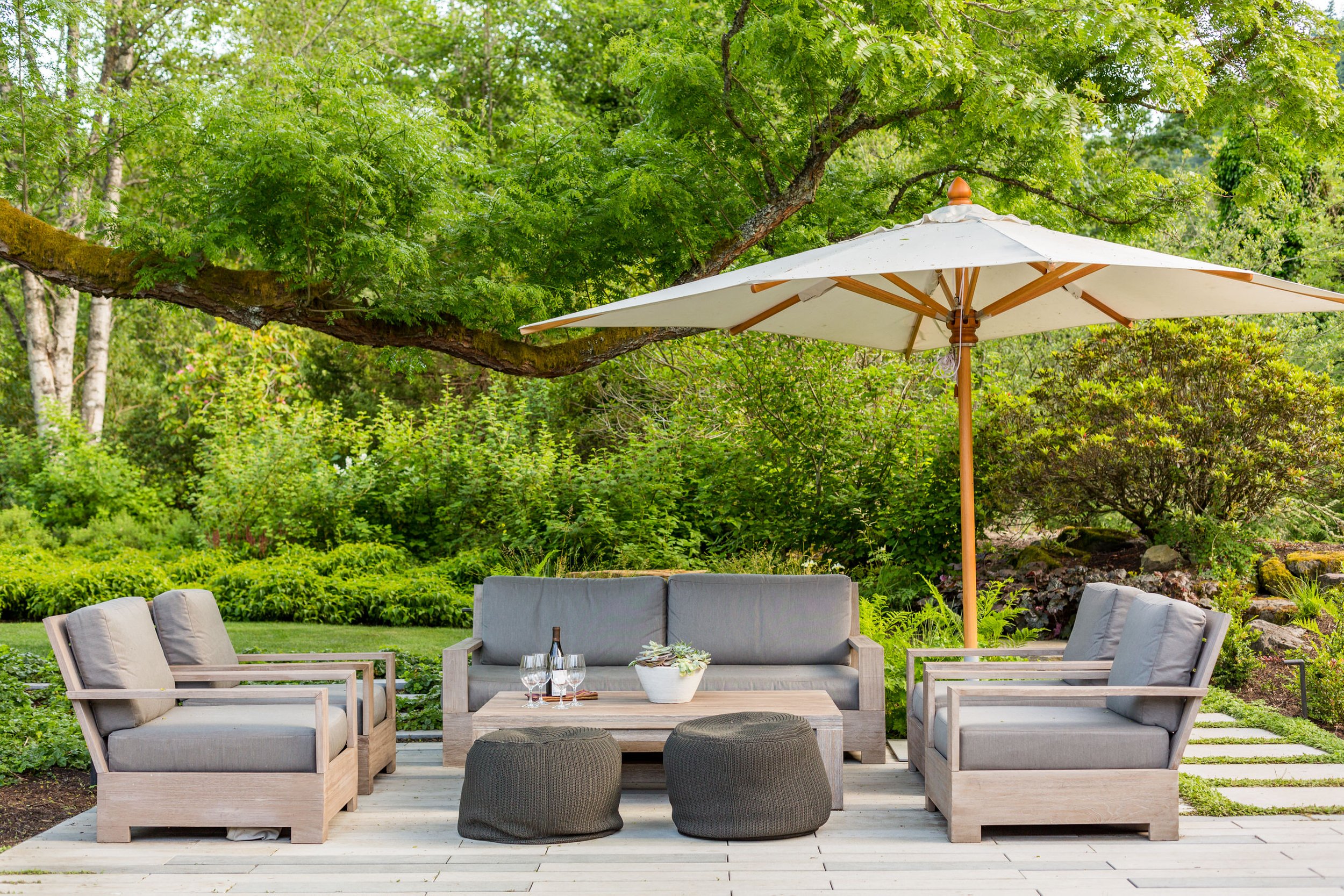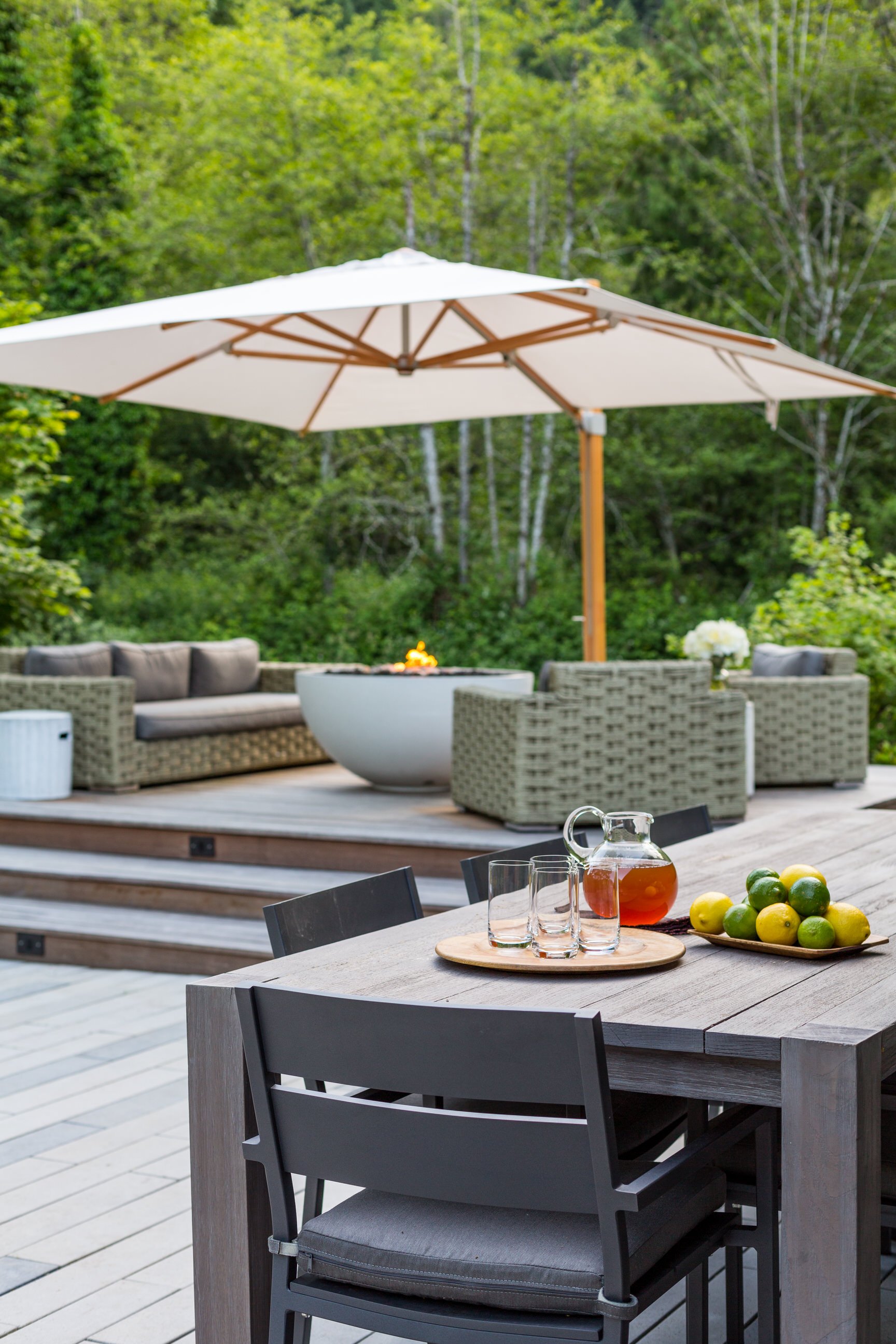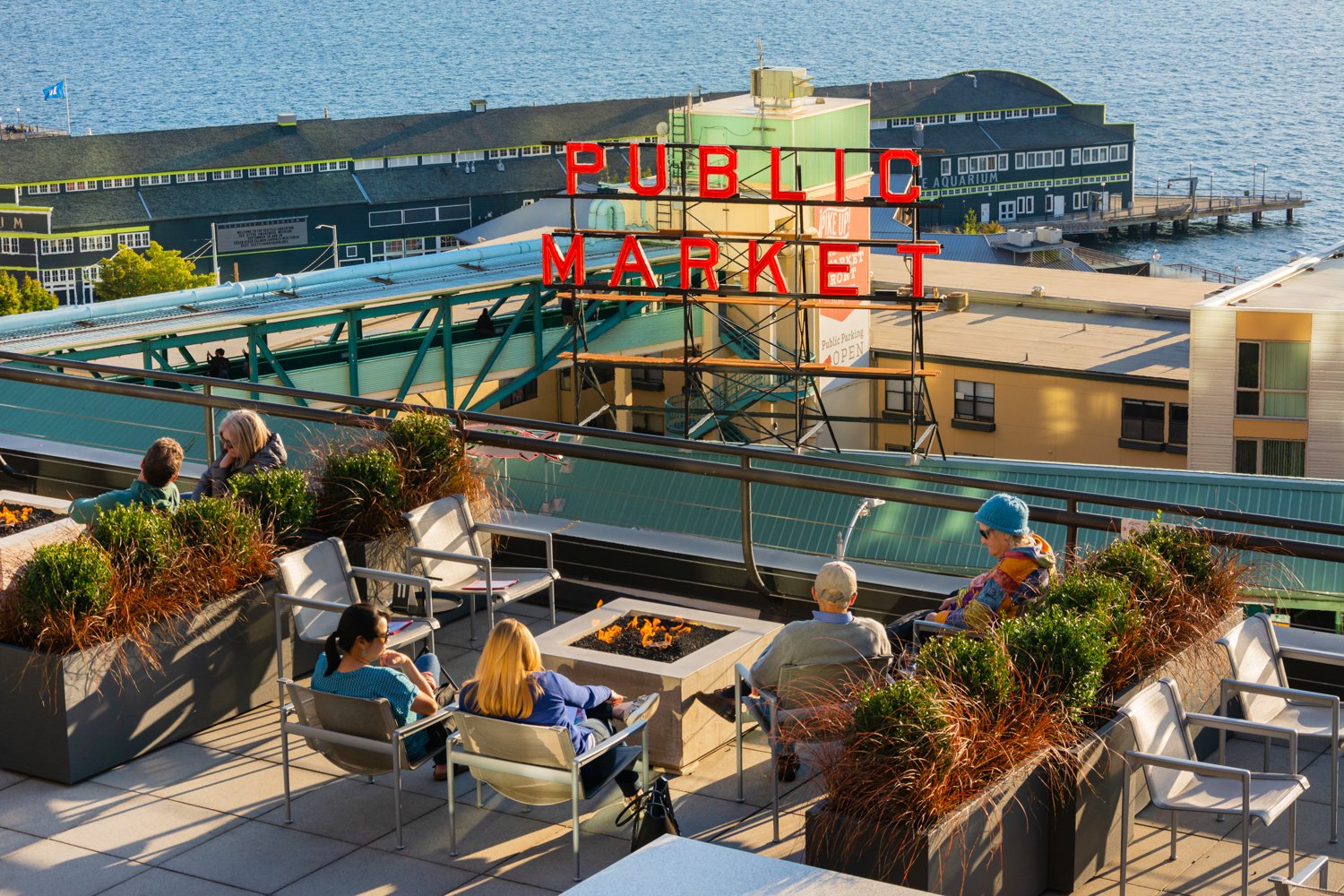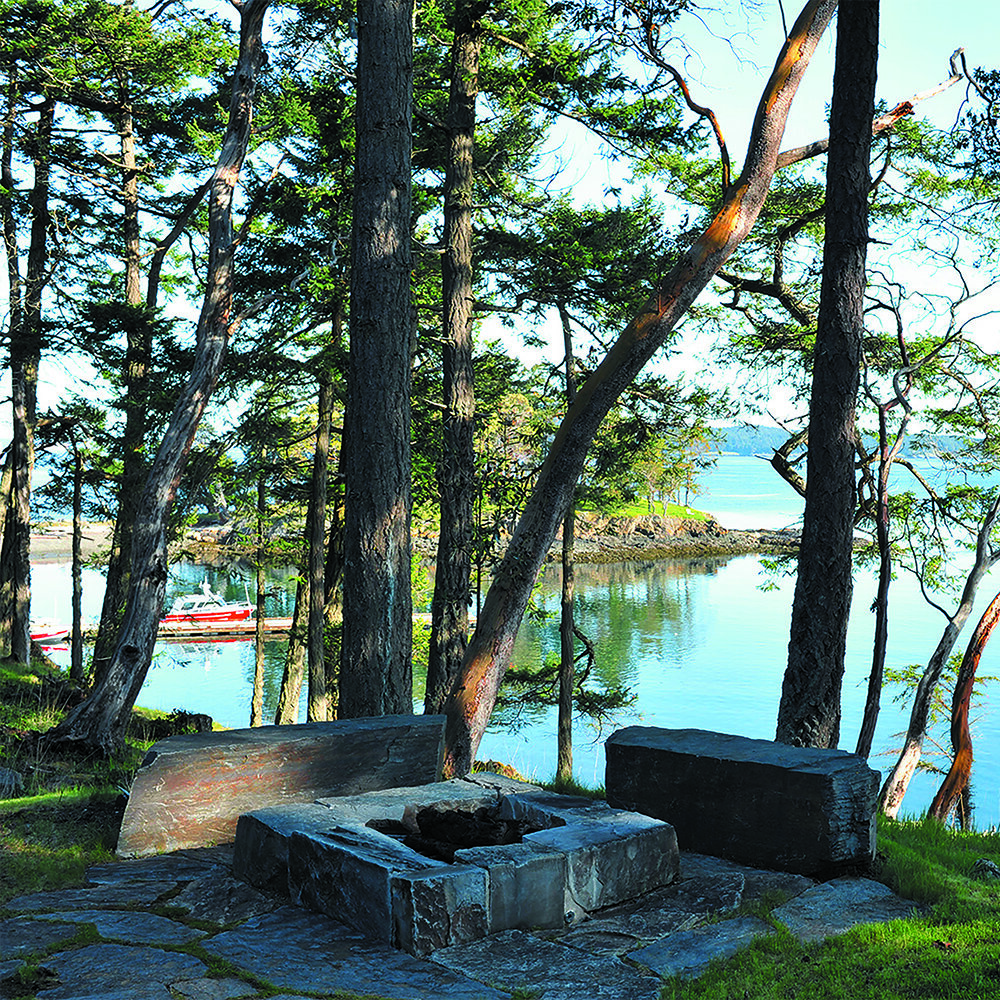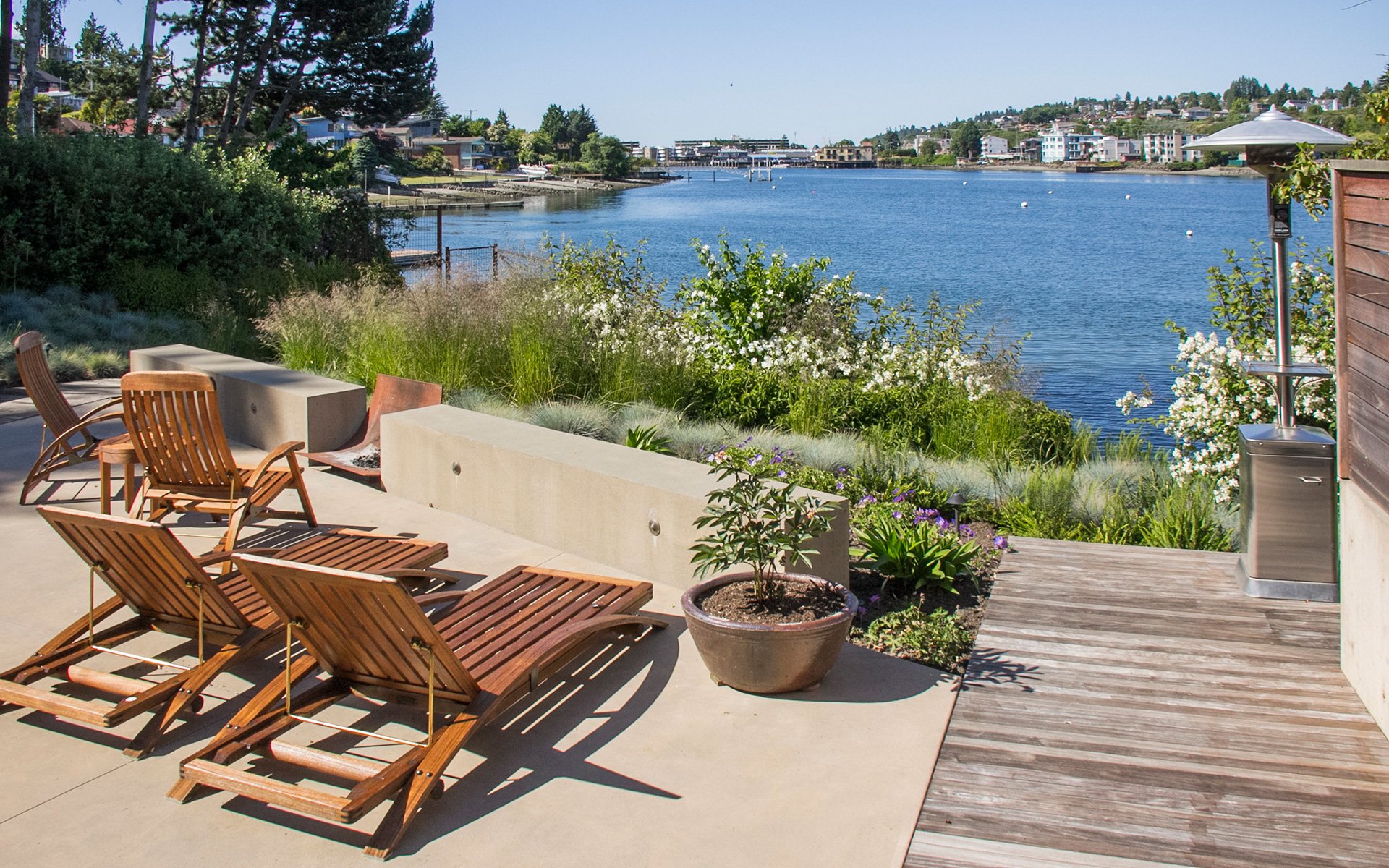Planning Your Next Outdoor Gathering Space
Exterior gathering spaces encourage people to get together and enjoy the outdoors. A successful gathering area should be designed in a way that utilizes available space, creates novel refuge from the indoors, and encourages reflection on the curated land that surrounds us. Gathering spaces occur whether we plan for them in the landscape or not – but by planning one intentionally, we can increase their value; both functionally and aesthetically.
The basic ingredients for a successful gathering area are the same whether they occur on public, commercial, or residential property. The ingredients are allure, location, size, and materials. Thoughtful consideration of these four ingredients in the design of your site will ensure long term fulfillment!
Ingredient Number One – Allure
What about this gathering space makes people want to stay? Why do people want to get together in this specific location? Is it an outdoor dining area or perhaps a good spot for watching the sunset? A fire feature is an easy way to make a place attractive to guests throughout the seasons. Thoughtfully choosing a focus or programming element will make all the difference in the amount of time you will want to spend in the space.
Ingredient Number Two – Location
Existing site conditions can narrow down where we locate our gathering spaces. Generally, we look for a flat or gently sloped area where we will not have to dramatically manipulate the landscape to accommodate our preferred area for gathering. However, it is also important to consider how we want to feel in our future space. Do we want to be able to see for a distance? Or feel tucked away? Many different programming elements can occur successfully in both spaces, but it is up to the owner to decide the site character they are trying to achieve. Logistics are also an important consideration when deciding on location; for example – if you wish to have an outdoor dining area, it makes sense to have it easily accessible from the kitchen. Ease of access will likely increase the amount of use your space gets and will be friendlier to larger groups of people.
Ingredient Number Three – Size
Do you envision entertaining a couple people or hosting large parties on your site? Bigger is not always better. A small space achieves an intimate vibe that feels cozy. It is helpful to choose site furnishings early on in your planning process to see how they fit in your allotted area. Sometimes we think we can fit more people or programming into the space than the site allows. When sizing for a dining area, it is helpful to see how a dining table fits before deciding on final hardscape dimensions. A low wall adjacent to your space can provide overflow seating without making it feel like something is missing when a smaller group is present.
Ingredient Number Four – Materials
Do the details of the space heighten your senses and connect you with your surroundings? Was the hardscape material appropriately chosen to weather the number of people using the space? Sometimes concrete makes the most sense depending on frequency of use, especially in public or commercial landscapes. To achieve a more intimate feel, consider stone paving or pavers.
For a smaller area gravel may be appropriate, especially for around a fire or a space tucked away in the woods. Lighting is another important materiality choice that requires a balance of intimacy and brightness. You don’t want to be serving food in a setting that is too dark, and you don’t want to be sitting around a fire with surrounding lights that are too bright. Consulting with a landscape architect or lighting designer can be helpful in making sure you get it just right.
The ability to gather is an important programming element in any landscape. With careful consideration of these four ingredients your space will attract people and help connect them to each other and to their surroundings.


